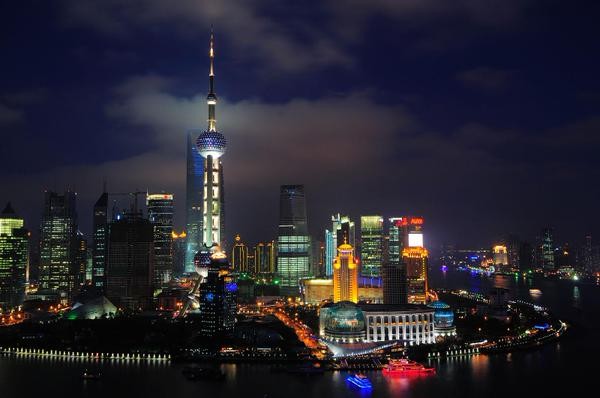China poised for major growth
Post on: 16 Март, 2015 No Comment

Despite slowing global economy, huge investment projected
Published: 09/10/2001 at 1:00 AM
Editors note: In partnership with Stratfor, the global intelligence company, WorldNetDaily publishes daily updates on international affairs provided by the respected private research and analysis firm. Look for fresh updates each afternoon, Monday through Friday. In addition, WorldNetDaily invites you to consider STRATFOR membership, entitling you to a wealth of international intelligence reports usually available only to top executives, scholars, academic institutions and press agencies.
China will see robust growth for the next year despite the global economic slowdown.
A large and expanding domestic market and Olympic preparations will boost the Chinese economy. More important, impending membership in the World Trade Organization will attract a burst of investment.
The World Trade Organization expects to issue final approval Sept. 13 to Chinas membership bid, ending the countrys 15-year struggle for acceptance. Joining the WTO would allow what has become, by some measures, the worlds second-largest economy to join the biggest global trading club.
WTO membership, combined with Chinas low labor costs and diversified economy, will allow it to maintain strong growth rates for at least the next year despite an intensifying global slowdown.
Many of Chinas neighbors will not be so lucky, however. Although some market-oriented countries, such as Thailand and South Korea, may be able to benefit from Chinas ascendance, state-directed economies such as Malaysia and Vietnam lack the wherewithal to thrive until the broader global picture brightens. For the near future, China will be an increasingly attractive destination for foreign investment.
Chinas economy remains isolated enough to blunt the effects of the international slowdown. Although about one-fifth of Chinas GDP depends on international trade, it is not nearly as vulnerable as its neighbors. About half of Thailands economy, two-fifths of South Koreas, and virtually all of Malaysias and Singapores economies depend on international links. Even isolationist Laos is more than twice as dependent on the whims of international markets as China. Further, Chinas massive population ensures a very deep domestic market for the economy.
Olympic preparations totaling $21 billion, according to the Peoples Daily will keep China chugging along until 2008. Unlike Japans wasteful capital investments, the Chinese variants will mainly be used for projects such as ring roads, housing improvements and new sewage systems. If a global slowdown seems to be infringing on the nations affluence, the government can always accelerate the building campaign to compensate.
But the single largest factor pushing China forward is the one that scares its neighbors most: its sheer size. With 1.2 billion people, China can pursue a development model very different from that of the rest of Asia.
In much of Asia, the shift to value-added production has happened as the price of labor rose. When labor is cheap, countries can afford to focus on low-end, labor-intensive products that require little skill for example, textiles. But as labor becomes more skilled and thus more expensive, countries shift to higher-value industries. For this reason, South Korea abandoned textiles and toys and moved into heavy industry and shipping, and eventually semiconductors and software.
Chinas labor cost advantages are difficult to understate. Another 900 million people more than the population of the rest of the Asian rim combined could conceivably move from economically depressed areas in the west to economically dynamic areas along the eastern coast, where less than one-fourth of the populace currently resides.
This continuing influx will keep labor costs down for decades, even as the pool of skilled labor increases. Whereas Taiwan had to continually revamp its industrial base as labor became more expensive, China has economies of scale on such a grand scale that it can simply add on new industries to complement the old.
The average Chinese wage is only $780 annually, far below Malaysias $3,390 or South Koreas $8,490, let alone Japans $32,030, according to 1999 World Bank statistics.
The only potential pitfall is not having enough investment dollars and top-shelf technology to facilitate the development of new industries.
WTO membership addresses that problem. Once membership becomes a reality, the foreign investment and expertise that keeps non-Chinese producers competitive will flood to the economy. The other major economies of the East Asian rim currently attract a total of $43.6 billion in investment, compared with Chinas $38.8 billion, according to the World Bank. As Chinas WTO accession date nears probably now before the end of the year more and more investment will flow its way.
This need not spell defeat for other Asian economies.
Several countries stand to perform well in the coming years, provided they can adapt fast enough to Chinas coming of age:
Singapore due to location, Chinese ethnicity and already deep financial expertise should be the best positioned to profit from this economic climate shift.
Taiwan, assuming it can avoid political wrangling, holds the singular opportunity to shape the mainlands evolution.
South Korea, with its growing experience in information technology and management, could do very well in managing Chinas rise assuming it can convince its gaggles of chaebol to drop expansionist, corrupt habits.
North Korea could be in a special position, with labor costs lower than Chinas, although it must first forge infrastructure links between South Korea and China.

Indonesia, also sporting lower labor costs, should be able to continue with its natural gas- and agriculture-based exports, but only if it can maintain political stability.
Other states will fare much worse:
- State-directed Malaysia and Vietnam cannot hope to adapt to Chinas ascendance without releasing the economic levers of power, but this would result in political chaos.
This doesnt mean China will surge unstoppably ahead; many Asian states will retain comparative advantages. But Chinas natural advantages, the coming Olympics and impending WTO membership will keep the dragons head well above water for at least the next year.
A host of events could still darken the otherwise cheery picture, but these potential bumps would hurt other Asian states more than China. For example, China only recently dove into the semiconductor industry. With the market experiencing low demand and record-high production, a global glut is hammering profits. But China has also diversified, leaving specialized economies such as Malaysia more vulnerable to the semiconductor glut.
An energy shock also could derail the long march toward development, but again, Chinas neighbors would suffer more. China needs to import only 30 percent of its oil while Japan, South Korea, Singapore and Taiwan must import all of theirs.
Chinas biggest economic challenge is actually rooted in its politics. President Jiang Zemin, in order to secure his own power and what he sees as his countrys future, is in the process of incorporating capitalism into the ruling elites ideology. While Communism has been practically nothing but window dressing in China for almost two decades, ditching it in name would provoke quite a backlash from older hard-liners such as Li Peng, chairman of the National Peoples Congress.
The coming power struggle over the words that sway Chinese minds is perhaps the largest obstacle to steady growth.














